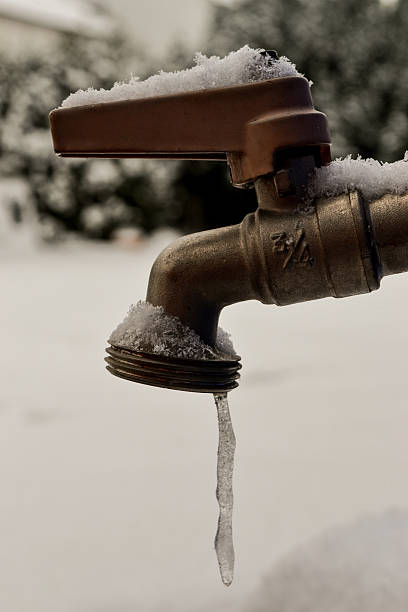We have uncovered the article relating to Preventing and dealing with frozen pipes listed below on the web and think it made sense to write about it with you here.

Winter can damage your plumbing, particularly by freezing pipelines. Below's just how to stop it from occurring and what to do if it does.
Intro
As temperature levels decrease, the threat of icy pipes rises, possibly resulting in pricey repair services and water damage. Comprehending how to prevent frozen pipes is important for homeowners in cold climates.
Avoidance Tips
Shielding prone pipelines
Cover pipelines in insulation sleeves or make use of warmth tape to shield them from freezing temperature levels. Focus on pipes in unheated or outside areas of the home.
Home heating methods
Keep indoor rooms appropriately heated up, particularly areas with plumbing. Open up cupboard doors to permit warm air to flow around pipelines under sinks.
How to identify icy pipes
Search for lowered water flow from faucets, unusual odors or noises from pipelines, and noticeable frost on revealed pipelines.
Long-Term Solutions
Architectural adjustments
Consider rerouting pipelines far from exterior walls or unheated locations. Add added insulation to attic rooms, cellars, and crawl spaces.
Upgrading insulation
Buy high-grade insulation for pipes, attic rooms, and walls. Appropriate insulation aids keep consistent temperature levels and reduces the threat of frozen pipelines.
Safeguarding Exterior Plumbing
Yard hoses and outside taps
Disconnect and drain pipes yard tubes before winter season. Install frost-proof spigots or cover outdoor taps with protected caps.
Understanding Frozen Pipelines
What causes pipes to freeze?
Pipelines freeze when exposed to temperature levels below 32 ° F (0 ° C) for prolonged durations. As water inside the pipes ices up, it expands, putting pressure on the pipeline wall surfaces and possibly causing them to break.
Threats and problems
Frozen pipelines can lead to supply of water disturbances, residential property damage, and expensive repair services. Burst pipes can flooding homes and trigger extensive architectural damage.
Signs of Frozen Pipeline
Determining frozen pipes early can prevent them from rupturing.
What to Do If Your Pipelines Freeze
Immediate actions to take
If you presume frozen pipelines, keep taps open up to alleviate stress as the ice melts. Use a hairdryer or towels soaked in warm water to thaw pipelines slowly.
Verdict
Protecting against icy pipelines requires proactive actions and quick reactions. By comprehending the causes, indications, and safety nets, house owners can safeguard their pipes throughout cold weather.
5 Ways to Prevent Frozen Pipes
Drain Outdoor Faucets and Disconnect Hoses
First, close the shut-off valve that controls the flow of water in the pipe to your outdoor faucet. Then, head outside to disconnect and drain your hose and open the outdoor faucet to allow the water to completely drain out of the line. Turn off the faucet when done. Finally, head back to the shut-off valve and drain the remaining water inside the pipe into a bucket or container. Additionally, if you have a home irrigation system, you should consider hiring an expert to clear the system of water each year.
Insulate Pipes
One of the best and most cost-effective methods for preventing frozen water pipes is to wrap your pipes with insulation. This is especially important for areas in your home that aren’t exposed to heat, such as an attic. We suggest using foam sleeves, which can typically be found at your local hardware store.
Keep Heat Running at 65
Your pipes are located inside your walls, and the temperature there is much colder than the rest of the house. To prevent your pipes from freezing, The Insurance Information Institute suggests that you keep your home heated to at least 65 degrees, even when traveling. You may want to invest in smart devices that can keep an eye on the temperature in your home while you’re away.
Leave Water Dripping
Moving water — even a small trickle — can prevent ice from forming inside your pipes. When freezing temps are imminent, start a drip of water from all faucets that serve exposed pipes. Leaving a few faucets running will also help relieve pressure inside the pipes and help prevent a rupture if the water inside freezes.
Open Cupboard Doors
Warm your kitchen and bathroom pipes by opening cupboards and vanities. You should also leave your interior doors ajar to help warm air circulate evenly throughout your home.

We are very taken with Preventing and dealing with frozen pipes and I really hope you enjoyed reading our article. So long as you enjoyed our blog entry kindly don't forget to pass it around. I praise you for your time. Don't hesitate to pay a visit to our blog back soon.
Book-Now